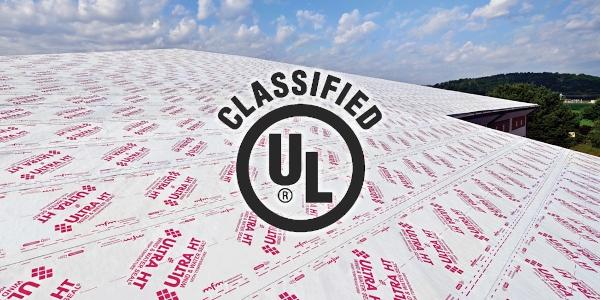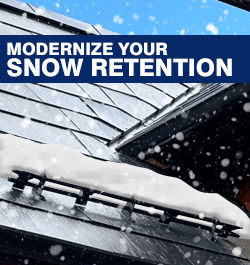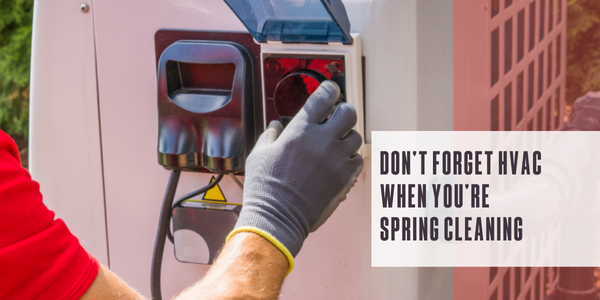UP TO THE MINUTE
Don’t forget HVAC during spring cleaning
June 9, 2025 at 9:00 a.m.By Malco.
Check out this guide to keeping a heating and cooling system in tip-top shape this spring.
As winter turns into spring, heating systems often begin to take a backseat to air conditioning and fans. This in-between season, before the true summer heat hits and ACs are running more often than not, is the perfect time to perform routine maintenance and service of HVAC systems. Whether you are working with an air conditioner, heat pump or mini-split, this type of care can save homeowners money on their energy bills, prevent costly repair needs, improve the indoor environment's air quality and extend the overall lifespan of the HCVAC system. Below, our experts here at Malco dive into what common HVAC maintenance should entail.
Benefits of HVAC spring maintenance
HVAC spring maintenance can provide many benefits, such as:
- Lower energy bills: A well-maintained HVAC system can operate more efficiently and use less energy. By cleaning or replacing air filters, checking refrigerant levels and inspecting ductwork, you can improve the system’s performance and reduce cooling costs.
- Fewer repairs: Seasonal maintenance can help catch and fix minor issues before they become significant problems. Lubricating moving parts, tightening electrical connections and testing the thermostat can prevent breakdowns and avoid expensive service calls.
- Better indoor air quality: HVAC maintenance can also improve the quality of the air in a home. By removing dust, dirt, pollen and other contaminants from the system, you can prevent them from circulating in the indoor air and causing allergies, asthma or other respiratory issues.
- Longer system lifespan: Preventative maintenance can also extend the life of a system. Keeping the system in good condition can prevent premature wear and tear and prolong its service life. A well-maintained HVAC system can last up to 15 years or more.
Performing HVAC spring maintenance
Simple HVAC maintenance tasks can be done year-round. Here are some of the tasks that technicians can perform:
- Clean or replace air filters: Air filters trap dust, dirt and other particles from the indoor air. They should be cleaned or replaced every few months or as the manufacturer recommends. This simple step can significantly improve a home’s air quality and extend the system’s life. If a homeowner tries to do this themselves, it is key to use the right size and type of filter for their system. This information can typically be found on the system panel. A qualified technician should be able to verify when on site.
- Inspect the ductwork: The ductwork is the network of pipes that delivers conditioned air to individual rooms. It should be sealed, insulated and free of leaks, holes or cracks. Homeowners can use a flashlight to look for any signs of damage or leakage, but if anything unusual is found, it is crucial to have a professional HVAC technician perform an inspection and possible repair.
- Check refrigerant levels: The refrigerant is the fluid that transfers heat from indoor air to the outdoor air. The fluid must be at the right level and pressure for a system to work correctly. Technicians use a gauge set, a thermometer and a refrigerant chart to check these levels. The gauge allows for connection to the system’s low-pressure and high-pressure ports. Then, they use the thermometer to measure the temperature of the refrigerant and compare it to the chart. If the refrigerant level is too low or too high, there may have a leak or a blockage in your system.
Conclusion
HVAC maintenance is essential to keep a home’s heating and cooling systems in excellent condition year-round. For the best results year after year, having regular inspections and maintenance is a good idea. Spring is a great time for this so that homeowners can be assured that they are ready for a comfortable and healthy summer.
Original article and photo source: Malco
Learn more about Malco Tools in their Coffee Shop Directory or visit www.malcoproducts.com.
Recommended For You

Westlake Royal Building Products™ brings on-trend roofing colors and cutting-edge solutions to the 2025 International Roofing Expo
Read More ...
DECRA Metal Roofing: Tested Above and Beyond to Ensure Quality
Read More ...
MFM Building Products announces UL Class A Fire Rating for Ultra HT Wind & Water Seal
Read More ...

















Comments
Leave a Reply
Have an account? Login to leave a comment!
Sign In